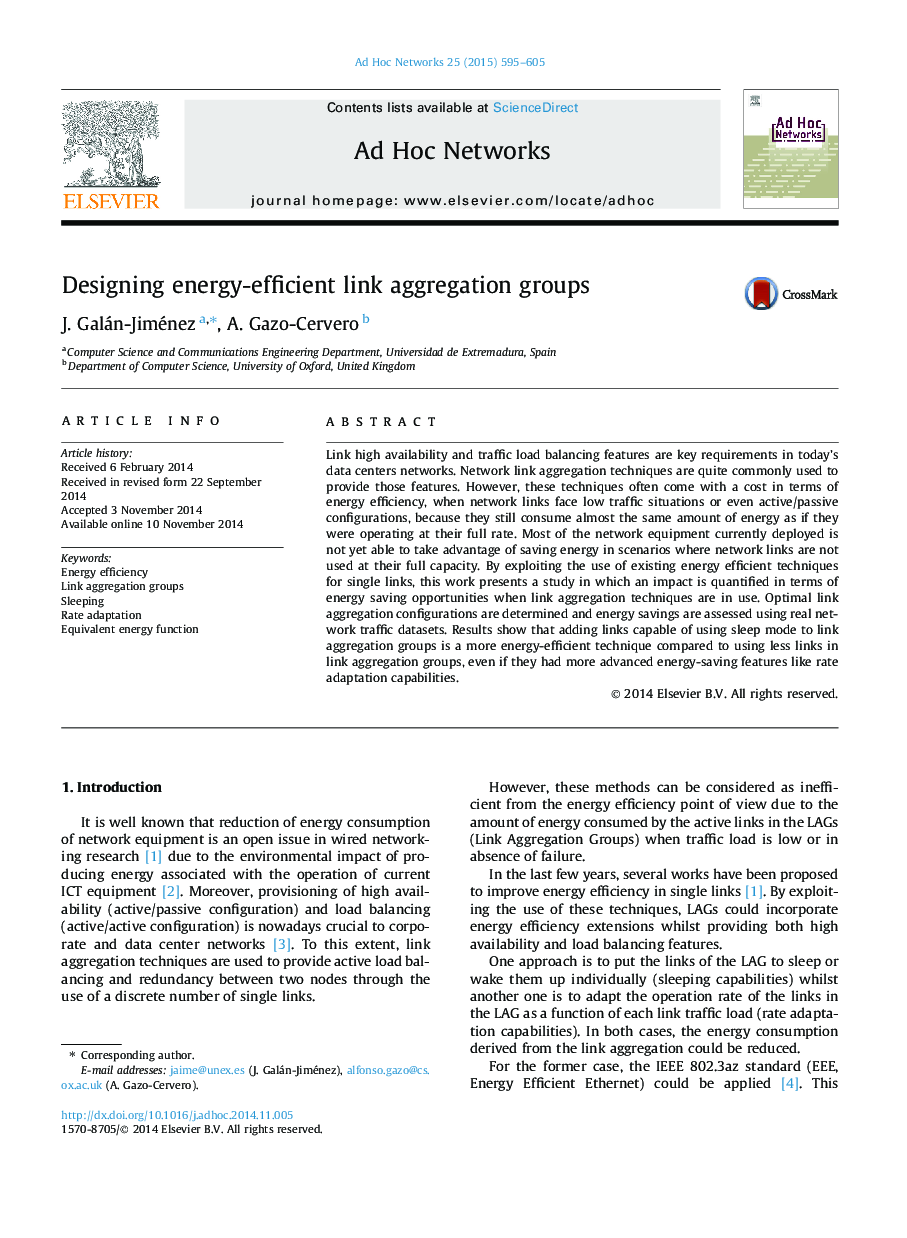| Article ID | Journal | Published Year | Pages | File Type |
|---|---|---|---|---|
| 445366 | Ad Hoc Networks | 2015 | 11 Pages |
Link high availability and traffic load balancing features are key requirements in today’s data centers networks. Network link aggregation techniques are quite commonly used to provide those features. However, these techniques often come with a cost in terms of energy efficiency, when network links face low traffic situations or even active/passive configurations, because they still consume almost the same amount of energy as if they were operating at their full rate. Most of the network equipment currently deployed is not yet able to take advantage of saving energy in scenarios where network links are not used at their full capacity. By exploiting the use of existing energy efficient techniques for single links, this work presents a study in which an impact is quantified in terms of energy saving opportunities when link aggregation techniques are in use. Optimal link aggregation configurations are determined and energy savings are assessed using real network traffic datasets. Results show that adding links capable of using sleep mode to link aggregation groups is a more energy-efficient technique compared to using less links in link aggregation groups, even if they had more advanced energy-saving features like rate adaptation capabilities.
